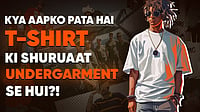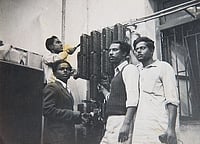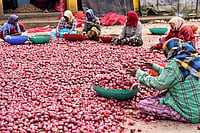Ruby Hembrom is the Founder and Director of adivaani, an archiving and publishing outfit of adivasis that aims to bring adivasi tales back into public discourse. Hembrom says that adivaani was born as she reached a threshold of experiencing exclusion and discrimination in her life as an Adivasi, a microscopic reflection of the scale of?exclusion, discrimination,?? ?government neglect,?and state?and corporate-sponsored crimes that play out in the everyday lives of adivasis.
Adivaani: The Adivasi Voice, The First Voice
In conversation with Outlook’s Daniya Rahman, Hembrom talks about the journey of adivaani, the difficulties of being a Santal woman publisher, the importance of multimedia, orality, and more.
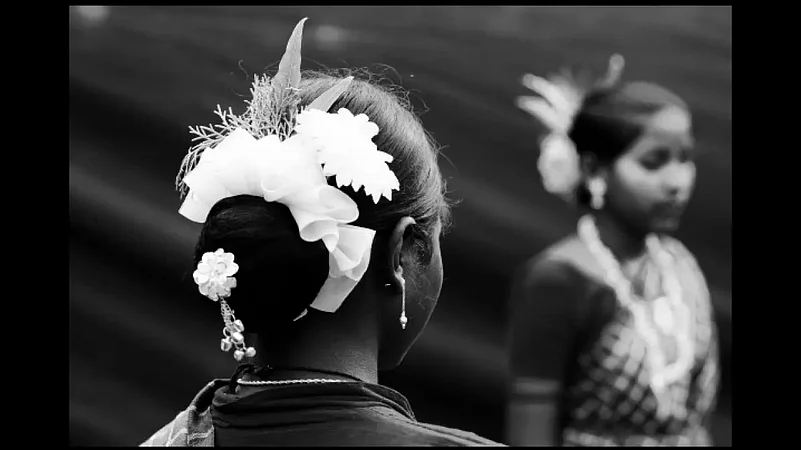
In conversation with Outlook’s Daniya Rahman, Hembrom talks about the journey of adivaani, difficulties of being a santal woman publisher, the importance of multimedia, orality, and more.
?
Tell us about adivaani's journey – how it started, how it was named, and how it's going currently?
The story of adivaani is an extension of mine, its becoming is the becoming of me. It wasn’t something I prepared for, but I strayed into. In April 2012, I attended a 4-month publishing course, just to learn a new skill. The first month was ‘Publishing Lives’ where we met national and international mainstream and independent publishers, authors, poets, illustrators, and printers. Some published exclusive writings of and for women, Dalits, etc. That spaces were created for specific narratives and identities was inspiring but there was no Adivasi name, no Adivasi presence. That invisibility and erasure bothered me. Were we not important to be included in general or were we non-existent in the publishing panorama?
Despite a shorter writing tradition, we still write— in our native languages or adopted regional languages, so I knew that non-existent we were not. But we were mostly self-published and our writings weren’t “good enough” to be a part of this curriculum. That did it for me– it wasn’t a Eureka, Aha! Moment but a tipping point.
I met my best collaborators at the course–Luis A Gomez, a Mexican journalist and writer, who had worked extensively with indigenous people in Latin America, and Boski Jain, a graphic designer from Bhopal with a keen interest in tribal art. They’ve been the professional help adivaani has required to become an outfit worth its salt.
I met Luis during the course, shared my idea with him and that was the beginning of his association with adivaani. As I sat through one of the sessions in the course, playing around with letters around the word tribal and Adivasi, the name adivaani came to mind – the Adivasi voice, the first voice!
We also choose to write adivaani in small letters, because we are small, everyday people and want to continue being so.
To sum it up, the adivaani idea was born out of the audacity to say “Enough is Enough” to the Adivasi voice being silenced and suppressed – to not being represented, to others speaking on our behalves, to being labelled as unintelligent and non-thinking people, to being denied a place in history and literature.
What are the challenges you face as a Santal woman publisher of indigenous stories and voices?
While as an Adivasi, woman publisher, I needn’t explain what I do or what kind of material I produce to my indigenous brethren, I am called on to do so with dominant peoples and audiences. To them, the tribal narratives I produce are steeped in mysticism and wonder and are of a lower cerebral order. What surprises them is not so much that I publish scholarly works but that indigenous peoples can produce intellectual material or any other writing for that matter. We are not believed to be thinking people and our work is looked at suspiciously.
Another challenge for us has been fighting through stereotypes and prejudices one associates with an Adivasi. Written in Roman Santali, our first book was about the Santals, their history and their entity. The background of the book’s cover was black. The printers we took the book to said, “Black is too sophisticated a colour for the very backward Santals” and strongly recommended we change the black to a cheery yellow or a bright maroon. But we stuck to black.
Once you are discovered or identified as Adivasi, most dominant people automatically assume power over you and think they are entitled to tell you what is “sophisticated” or not, where you belong or don’t.
In another incident, the distributors of an online book portal refused to sign us on. Without even looking at our books, they decided that “Adivasi books are not good enough.” The stigmatisation of Adivasis and their knowledge systems is so deeply entrenched that any creativity or scholarship is looked at as an exception, a one-time, lucky spark of brilliance rather than a norm.
Just like producing indigenous knowledge comes with its unique set of challenges, so does seeking support or funding. Presenting indigenous knowledge as something worth sponsoring can be tough because of the limitations of showcasing it as a large-scale, life-changing outcome. Explaining that books are a medium to preserve entire indigenous communities from extinction and cultural genocide is not easy.
I’m a publisher who hasn’t been able to publish anything in nearly 4 years. A large part of my time goes into writing funding proposals for adivaani and myself (people find an English-speaking Adivasi person an attractive proposition to fund through fellowships, which I then channel back into work), going through constant rejections, but keeping at it still.
?
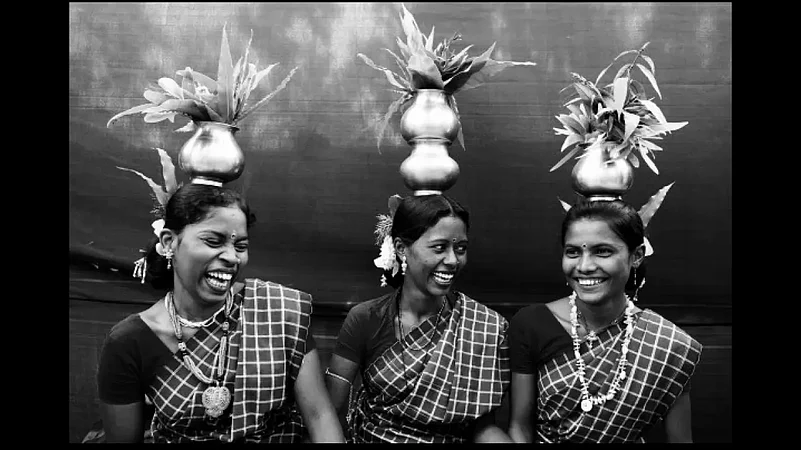
Translations do not just bring languages closer to one another, they also introduce us to diverse modes of imagining and perceiving different cultures. The process of translation then is essentially a transfer from one culture into another; it is cultural reception. What are your thoughts on this and the use of the English language?
I am an Adivasi publisher, coming from a tradition of orality, who publishes in English. How was I going to build an Adivasi writing canon, in the context of not being a literate society, where we still have first-generation learners, and many will not go to school? If we have a chance at formal education, it is not in our native languages, then how do we write in it?
As Adivasis, we are living documents ourselves. So as a publisher, I was, and still am, confronted by the dilemma of producing and reproducing what’s organic. How do you capture, project, and market insight, wisdom, experience, memory, and traditions? Translation then for Adivasis is transmission—rehabilitating the oral literary tradition to the written, where negotiating majoritarian languages and scripts facilitates this process.
For the non-scripted Adivasi [coming from orality], it was primarily the Christian missionaries to India in the mid-1800s who took up the task of generating a script that mirrors our language, by adapting the Roman or Latin scripts with diacritical marks, and also using the dominant regional languages of the regions Adivasis inhabited to do the same. This ushered in a literary legacy in multiple scripts. Santali, my mother tongue, is written in five official scripts. Given our access to literacy, one Adivasi can’t know all five of those.
So far, most of our manuscripts have been in English. When that’s not the case, we have translated them into English and published bilingual books (like Angor [Hindi-English] and Soso-Bonga by Ram Dayal Munda and Ratan Singh Manki [Mundari-English]).
While the negotiations around language certainly play a big part in Adivasi publishing — and English is as foreign to us as Hindi – it is the spectrum of genres our books cover, from fiction to non-fiction, children’s literature, poetry, academic work, with themes of folklore, Adivasi epistemology, tangible and intangible memory, loss, romance, art, culture, feminism, displacement, land grab, extractivism, governmental neglect, state
and corporate-sponsored crimes, identity, human and indigenous rights- encapsulating our rich and diverse culture and history.
Translation, as transmission, is fuelled by the desire and need to be heard, known, and understood worldwide. As indigenous peoples, we release our material to translation with the belief that if you don’t understand me, I’ll tell it to you in your language. However, I can’t guarantee you will understand.
Our literature may be distinctive from others, often requiring extra effort, imagination and graciousness from readers. We may feel burdened or imprisoned by standards of language and be forced to simplify our text. But how much is too much? The politics of language and its nuances in the translation and publication of tribal literature is something we continue to grapple with.
In an interview, you say, "We want to document every Adivasi narrative, record oral traditions, art, stories and folklore." In this context, what is the importance of multimedia?
adivaani is not just about books. We want to document and disseminate the tangible and intangible cultural facets of Adivasis in English, using diverse multimedia and broadcasting channels accessible to Adivasis, into cultural products like documentary films, musicology, and exhibitions. There is no ignoring the penetration of multimedia, but we also have to recognise the opportunity gaps for Adivasis in the modern world due to educational and linguistic barriers. How can adivaani adapt to the technological takeover or reinvent itself through multi-form, multimedia, adaptable and flexible methods that can be customised for indigenous communities lacking electricity, internet, gadgets, or printers?
No matter what technology has to offer or the revolutionary ways in which it changes the transmission of knowledge and information, it is still a rich man’s entitlement. Books and libraries will always be the poor man’s browsers.
Oral traditions are an integral part of Adivasi culture and history, do you think orality is today considered a form of creative expression?
It’s commonly understood that text is the death of orality, making orality a pre-literacy tradition. But we are still not literate; we still have first-generation learners, and many will still not go to school. Even in schools, we are not taught in Santali, or Adivasi languages, then how can we write in it?
Our knowledge systems and all it embodies are kept alive by singers, storytellers and families who in their music and oration preserve and re-create the community’s idea of itself. The oral tradition is a distillation of the shared community and corporal experience that gives language meaning. To this extent, orality for Adivasis is more than just a creative expression.
For the Santals, the Karam Binti is among the most pivotal of oral traditions, connected with the recitation of “...the history of the world from the creation and through the ages”. It is a ritual, celebration, and link to our histories and ancestors. Today, it also exists in several written forms. Both exist simultaneously and are equally authoritative, an acknowledgement of the life forms of Orality.
Now some of us have taken to writing, which is not the end of orality but a continuation, a co-creation in a new format. Writing is often seen as the next stage of orality, but for us, it is a symbol of the continuity of our knowledge systems. It is a parallel existence, at least for now. Our retelling in either form depends then on how and what we ‘remember’.
The strength of oral traditions and their inherent quality lies in the ability to survive through the power of collective memory and renew themselves by incorporating new elements. If we accept this reality of creation and re-creation of narration as a natural process of life, then it would cease to be a problem.
How important is visual representation in children's literature?
Illustrators are the real editors of children’s books with minimal to no text. They are the set and costume designers of a grand production on paper. I’ve now worked with two illustrators, who only enhanced the imaginative capabilities, storytelling, and quality of our books.
I have taken our books to many commemorations of Adivasi histories, like the Santal rebellion, in Bhognadih, Jharkhand. At the adivaani stall interacting with people, I saw that most couldn’t read the books but could clearly tell what they were about. They were surprised I spoke Santali.
Them flipping through our illustrated books on the mythical creation stories of Santals was an indescribable moment for me. I was treated to storytelling sessions of books I recast on paper, from people who couldn’t read. Through the images and illustrations, they were able to identify characters and recall the creation stories they grew up hearing and telling and narrated them to me. The notion of books being for the “literate” came crashing down – this is the power of images, stories and memories. They transcend all barriers and break the notion of an “unintelligent, non-thinking” Adivasi.















